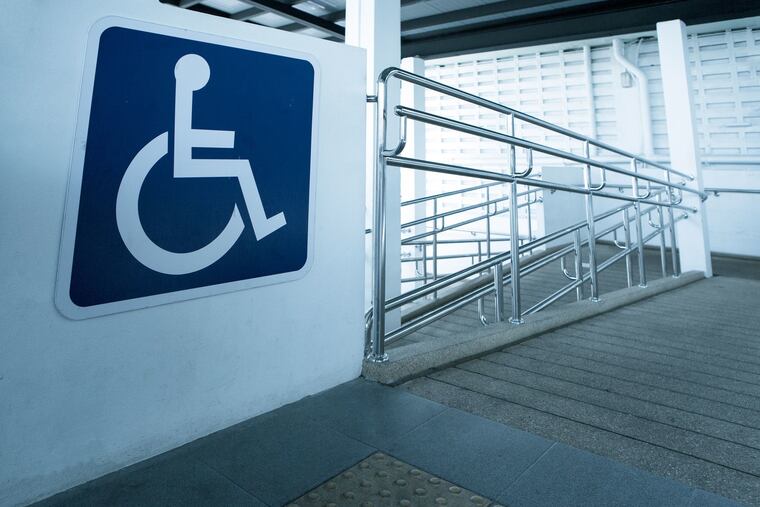What small businesses need to know about ADA violations
Complying with the Americans With Disabilities Act isn't just a legal imperative; it's good business.

Lawsuits filed against small businesses that are accused of violating the Americans With Disabilities Act or ADA are growing in number.
According to web compliance provider Usable.net, more than 16,000 lawsuits accusing companies of digital noncompliance with ADA rules have been filed since 2020, most of which were against companies with revenues less than $25 million.
Some of these cases, originated by so-called serial filers, could be considered an abuse of the system. For example, in Oregon, a man admitted that he received about $600 a month to visit local businesses and then sued them for disability access violations. More than two dozen lawsuits were filed by a California woman seeking damages from small businesses that allegedly violated the ADA. And in Philadelphia a man reportedly sued more than 30 eating and drinking establishments throughout the area for allegedly failing to comply with various ADA requirements.
“Some law firms are known for finding problems where there are none,” Marc Levy of The 215 Guys, a website design firm in Philadelphia, wrote in a blog post earlier this year. “In most industries, regulations would be enforced with inspections and corrections, but the ADA is enforced with lawsuits.”
Still, many cases do have merit, and small-business owners need to be aware of how to comply with the ADA.
ADA requirements for small businesses
Oftentimes, small-business owners incorrectly believe that facilities and practices they had before the ADA came along will be allowed to continue simply because they predate the law, said Sharon Caserta, an attorney at Morgan & Morgan. “This is usually not the case.”
Caserta says the ADA applies to just about all small businesses, and compliance comes in different forms.
“It’s not only the structural features of your business but also through policies that ensure customers with disabilities can access the services of the small-business provider, such as your website,” she said.
According to Joseph D. Lento of the Lento Law Group in Philadelphia, there are four main areas that small businesses need to focus on in order to be compliant with the ADA, with the first being physical accessibility. The law requires that businesses must have accommodations like wheelchair ramps, elevators, and accessible restrooms and that they have removed architectural barriers that prevented or hindered access and navigations.
“Ensuring that your small business is physically safe for customers and employees remains a critical component of ADA compliance,” he said.
A lesser-known aspect of the ADA is providing effective communication, which includes providing auxiliary aids and services such as sign language interpreters or TTY (teletypewriter) devices.
One more recent aspect of the ADA is the Web Content Accessibility Guidelines, which were updated earlier this year.
“Businesses, to comply with this provision, must ensure their websites are perceivable, operable, understandable, and robust,” said Lento.
Finally, it’s important that small-business owners should be aware of the ADA’s employment provisions, which prohibit discrimination against individuals with disabilities in hiring, promotions, and terminations.
“The general standard is that businesses must provide reasonable accommodations to qualified individuals with disabilities unless doing so would impose an undue hardship on the business,” Lento said.
ADA tax incentives can help you comply
There are a few federal tax credits and deductions to help defray the costs of complying with the ADA.
For example, the Disabled Access Credit provides a nonrefundable credit of up to $5,000 for small businesses (those with less than $1 million in revenue and no more than 30 full-time employees) for the purpose of providing access to persons with disabilities.
The Architectural Barrier Removal Tax Deduction, up to $15,000 a year, encourages businesses of any size to remove architectural and transportation barriers to the mobility of persons with disabilities and the elderly.
There’s also the Work Opportunity Tax Credit, which ranges from $1,200 to $9,600, for businesses that hire individuals from certain target groups, like those with disabilities.
The government provides ADA guidance and resources
The Department of Justice Civil Rights Division offers technical assistance and easy-to-read brochures, as well as a free ADA information hotline. While the hotline does not provide legal advice, it answers questions about ADA compliance.
Local ADA advice and training are often available through Pennsylvania’s Centers for Independent Living, Protection and Advocacy entities and disability-focused providers such as Deaf Service Centers, affiliate Chapters of the National Federation of the Blind, and entities that serve veterans with disabilities.
Lento says complying with the rules not only creates a better environment for consumers and employees, but will also benefit the small-business owner in the long run by avoiding the negative consequences of failure to comply.
Caserta agrees. “Don’t wait to learn about potential ADA violations in your business; lean into it, and learn how to achieve compliance,” she said. “Remember: Individuals who are disabled are also your customers and, just as importantly, they are members of your community.”
Correction: A previous version of this article incorrectly stated where Sharon Caserta is based. She is based in Jacksonville, Florida.